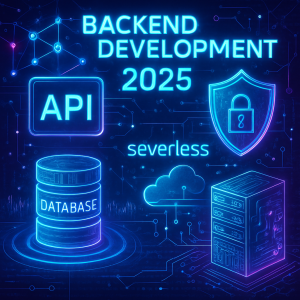In the fast-paced world of Agile development, a well-maintained product backlog is the backbone of successful project delivery. Without clear priorities, actionable tasks, and collaborative alignment, teams risk derailing sprints, missing deadlines, and delivering subpar value to stakeholders.
Enter backlog refinement—the unsung hero of Agile workflows. This guide dives into everything you need to know about backlog refinement, from its purpose and process to best practices and meeting strategies.
Whether you’re new to Agile or a seasoned Scrum master, this resource will equip you to streamline your team’s workflow and maximize productivity.
What is Backlog Refinement?
Backlog refinement (historically called “backlog grooming”) is the ongoing process of reviewing, updating, and prioritizing items in the product backlog.
It ensures that user stories, bugs, and tasks are clearly defined, estimated, and ready for upcoming sprints.
Think of it as spring cleaning for your project roadmap:
- removing ambiguity,
- breaking down complex tasks, and
- aligning the team on what’s next.
In Scrum backlog refinement, the Product Owner, Scrum Master, and development team collaborate to:
- Clarify requirements and acceptance criteria.
- Estimate effort using story points or time.
- Prioritize items depending on business value and dependencies.
- Remove outdated or irrelevant tasks.
This iterative process keeps the backlog “ready” for sprint planning, reducing last-minute chaos and ensuring smooth Agile execution.
Backlog Grooming vs. Backlog Refinement
You’ve likely heard both terms used interchangeably, but there’s a subtle distinction. Backlog grooming was the original term in Agile circles, but over time, the community shifted to backlog refinement to emphasize its proactive, value-driven nature. While grooming focused on tidying up tasks, refinement goes further:
- Grooming: Reactive maintenance (e.g., updating statuses, deleting duplicates).
- Refinement: Strategic alignment (e.g., prioritizing ROI, breaking epics into stories).
The term “refinement” better reflects the collaborative effort to enhance clarity and value, making it the preferred choice in modern Agile backlog refinement practices.
Steps of Backlog Refinement
Effective product backlog refinement follows a structured approach:
Review Existing Items:
- Assess current backlog items for relevance.
- Update descriptions, acceptance criteria, or dependencies.
Estimate Effort:
- Use planning poker, t-shirt sizing, or story points to gauge complexity.
- Ensure consensus among developers on estimates.
Prioritize Ruthlessly:
- Rank items by business value, urgency, and risk.
- Validate priorities with stakeholders.
Break Down Large Items:
- Split epics into smaller, sprint-sized user stories.
- Clarify technical requirements and subtasks.
Define “Ready” Criteria:
- Ensure each item meets the team’s Definition of Ready (DoR).
- Confirm resources, designs, and approvals are in place.
Trim the Backlog:
- Remove obsolete tasks or duplicates.
- Archive low-priority items for future consideration.
By following these steps, teams maintain a healthy, actionable backlog that aligns with sprint goals.
Best Practices for Backlog Refinement
To master Agile backlog refinement, adopt these proven strategies:
Schedule Regular, Focused Sessions
Why it matters: Consistency prevents backlog bloat and ensures alignment. Teams that refine sporadically risk wasting sprint planning time on unclear tasks.
How to do it:
- Frequency: Aim for 1–2 refinement sessions per sprint, depending on project complexity.
- Timeboxing: Limit sessions to 60–90 minutes to maintain focus and energy.
- Preparation: Share the backlog 24 hours in advance so attendees come ready to discuss.
Pro Tip: Use a recurring calendar invite to build a rhythm. For remote teams, schedule shorter, more frequent sessions to combat Zoom fatigue.
Foster Cross-Functional Collaboration
Why it matters: Diverse perspectives uncover hidden risks and opportunities. Developers, testers, designers, and UX experts each bring unique insights.
How to do it:
- Rotate facilitators: Let team members take turns leading refinement to encourage ownership.
- Silent brainstorming: Start with 5 minutes of silent idea-writing to gather unbiased input.
- Include QA early: Involve testers in defining acceptance criteria to prevent gaps.
Example: A designer might flag a user story missing mobile responsiveness, prompting the team to split it into platform-specific tasks.
Prioritize Ruthlessly with the Product Owner
Why it matters: Not all backlog items deliver equal value. Prioritization ensures resources go to high-impact work.
How to do it:
- MoSCoW Method: Categorize items as Must-have, Should-have, Could-have, or Won’t-have.
- Weighted Shortest Job First (WSJF): Rank tasks by ROI, time sensitivity, and effort.
- Stakeholder alignment: Regularly validate priorities with business leaders to avoid missteps.
Pro Tip: Use a scoring matrix to objectively compare items. For instance, rank features on a scale of 1–5 for business value and implementation complexity.
Break Down Epics into Actionable Stories
Why it matters: Large, vague tasks (epics) stall progress. Smaller stories enable incremental delivery.
How to do it:
- INVEST Criteria: Ensure stories are Independent, Negotiable, Valuable, Estimable, Small, and Testable.
- Vertical slicing: Split epics into end-to-end functionalities (e.g., “User login” → “Password reset flow”).
- Spike solutions: Create timeboxed research tasks for unknowns (e.g., “Investigate payment gateway API”).
Example: An epic like “Revamp checkout page” becomes:
- “Add guest checkout option”
- “Optimize mobile checkout layout”
- “Integrate PayPal payment method”
Define and Uphold the “Definition of Ready” (DoR)
Why it matters: A clear DoR prevents half-baked tasks from derailing sprints.
How to do it:
- Collaborate on a checklist (e.g., “User story has acceptance criteria,” “Dependencies are resolved”).
- Reject stories that don’t meet the DoR during refinement.
- Revisit the DoR quarterly to adapt to team maturity.
Sample DoR:
- Clear acceptance criteria
- UI/UX mockups approved
- Technical feasibility confirmed
- Dependencies mapped
Leverage Visual Tools and Metrics
Why it matters: Visualizing the backlog reduces ambiguity and drives accountability.
How to do it:
- Kanban boards: Use columns like “Ready,” “Needs Refinement,” and “Blocked.”
- Burndown charts: Track backlog progress over time.
- Story point velocity: Use historical data to gauge how much the team can handle.
Tool Recommendations:
- Jira: For Scrum teams needing granular tracking.
- Trello: For simplicity and visual appeal.
- Miro: For collaborative virtual whiteboarding.
Continuously Refine Acceptance Criteria
Why it matters: Vague criteria lead to scope creep and missed expectations.
How to do it:
- 3 Amigos Technique: Have a developer, tester, and product owner jointly define criteria.
- Behavior-Driven Development (BDD): Frame criteria as “Given-When-Then” scenarios.
- Review pre-sprint: Revisit criteria during refinement to ensure clarity.
Example:
- Poor: “User can filter products.”
- Better: “Given a user selects ‘Price: Low to High,’ then the product grid displays items sorted by ascending price.”
Balance New Features with Technical Debt
Why it matters: Ignoring tech debt slows long-term progress.
How to do it:
- Allocate 10–20% of sprint capacity to debt reduction.
- Prioritize debt that blocks new features (e.g., “Refactor authentication module to enable SSO”).
- Use the Boy Scout Rule: “Leave the code cleaner than you found it.”
Pro Tip: Create a “Technical Health” epic to track debt visibly in the backlog.
Keep the Backlog Lean and Relevant
Why it matters: A bloated backlog overwhelms teams and obscures priorities.
How to do it:
- Prune ruthlessly: Archive items untouched for 3+ sprints.
- Limit work-in-progress (WIP): Focus on refining the next 2–3 sprints only.
- Avoid gold-plating: Discuss solutions after agreeing on the problem.
Red Flag: If your backlog exceeds 100 items, it’s time for a spring cleaning session.
Encourage Open Communication and Feedback
Why it matters: Psychological safety fuels innovation and problem-solving.
How to do it:
- Retrospectives: Discuss refinement pain points in sprint retrospectives.
- Anonymous feedback: Use surveys to surface concerns.
- Celebrate wins: Recognize when refinement leads to smoother sprints.
Example: A developer hesitant to challenge a priority might write their concern on a sticky note for the Scrum Master to address.
Use Timeboxing to Maintain Focus
Why it matters: Open-ended discussions waste time and frustrate teams.
How to do it:
- Set a timer: Allocate 5–10 minutes per user story.
- Parking lot: Table off-topic discussions for follow-up.
- Delegate follow-ups: Assign action items to resolve lingering questions post-meeting.
Script for Scrum Masters:
“We’ve spent 8 minutes on this story—let’s note the remaining questions and assign them to [Name] to resolve by tomorrow.”
Review Past Sprints for Continuous Improvement
Why it matters: Learning from past sprints sharpens future refinement.
How to do it:
- Analyze spillover: Why did tasks get pushed? Was refinement insufficient?
- Track estimation accuracy: Compare initial story points to actual effort.
- Solicit feedback: Ask, “What could we refine better next sprint?”
Pro Tip: Add a “Refinement Health Check” to your retrospective agenda.
Backlog Refinement Meeting: A Deep Dive
The backlog refinement meeting is where the magic happens. Unlike sprint planning, this session is dedicated to preparing the backlog—not committing to work.
What Happens During a Backlog Refinement Meeting?
- Clarify Requirements: The Product Owner explains upcoming features.
- Estimate Effort: The team debates and agrees on effort estimates.
- Break Down Epics: Large tasks are split into achievable stories.
- Challenge Priorities: The team questions the order of items to optimize value.
- Update Documentation: Acceptance criteria and dependencies are recorded.
Who Runs and Attends?
- Product Owner: Leads prioritization and clarifies business needs.
- Scrum Master: Facilitates discussions and ensures adherence to timeboxes.
- Development Team: Provides technical insights and estimates.
- Stakeholders (Optional): Occasionally join to validate priorities.
How to Run an Efficient Meeting
- Prepare in Advance: Share the backlog 24+ hours beforehand.
- Set an Agenda: Focus on high-priority items first.
- Timebox Each Item: Allocate 5–10 minutes per story to avoid tangents.
- Encourage Collaboration: Use brainstorming techniques like “silent writing” to gather diverse input.
- Document Decisions: Update tasks in real time using shared tools.
- End with Action Items: Assign owners to follow up on unresolved questions.
Conclusion
Backlog refinement isn’t just a checkbox in the Scrum process—it’s the glue that holds Agile teams together.
By investing time in clarifying requirements, estimating effort, and prioritizing strategically, you’ll transform your backlog from a chaotic wishlist into a dynamic action plan. Whether you’re tackling product backlog refinement for a new feature or fine-tuning tasks for next week’s sprint, remember consistency, collaboration, and clarity are key.
Ready to level up your Agile game? Start refining your backlog today, and watch your team’s efficiency—and morale—soar.



